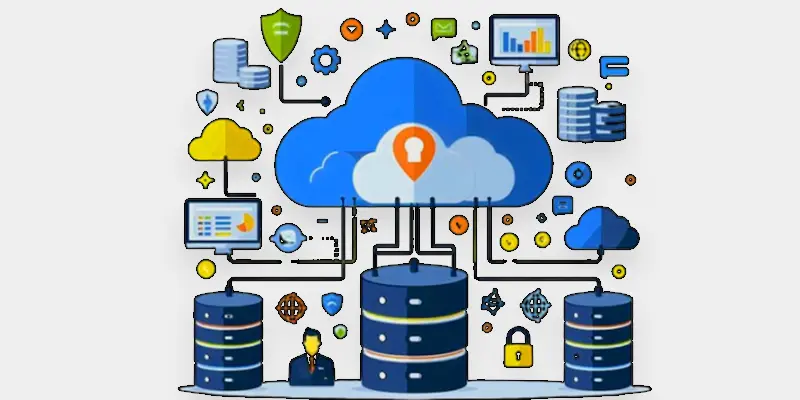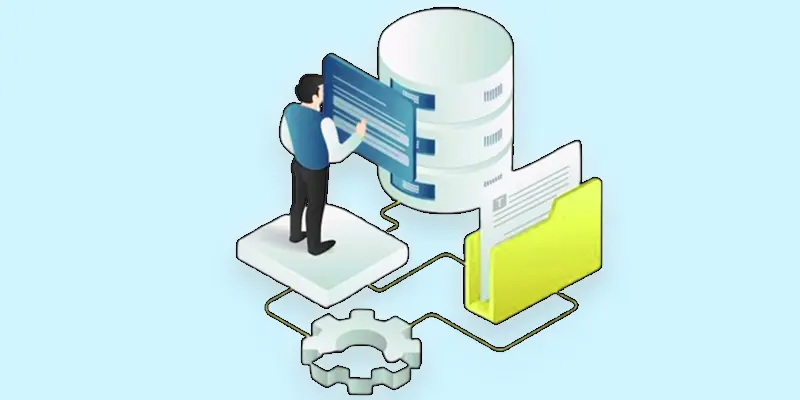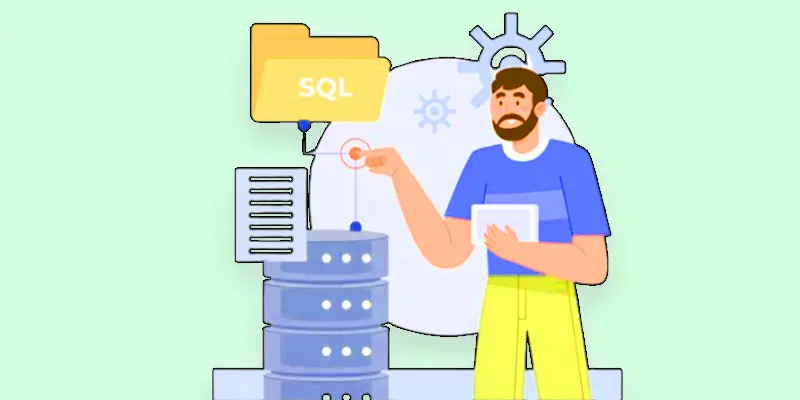Types of Database | Simple Guide with Pros and Cons
Published: 21 Sep 2024
Different Types of Databases Used in Real Life
Data is managed, stored, and arranged in databases such that it is simple to access and edit. Databases come in various varieties, each intended to meet a particular purpose. While NoSQL databases are more adaptable and have the capacity to handle vast volumes of unstructured data, relational databases store data in tables.
Cloud databases let you store data online, making it easy to access from anywhere. Distributed databases spread data across multiple locations to improve speed and reliability. Lastly, graph databases focus on showing relationships between data, which is useful for social networks and other connected systems. Each type serves a unique purpose, helping businesses and individuals handle data efficiently.
Types of Databases in DBMS With Examples
Different types of databases in DBMS are briefly explained below:
What is a Relational Database with Example
A relational database stores data in tables, much like a spreadsheet with rows and columns. Each table holds specific information, and tables can be linked together using common data points, like IDs, making it easy to organize and search through data. This type of database is great for managing structured data, such as customer records or product inventories.
Examples: Popular examples of relational databases include MySQL and PostgreSQL.
| Benefits of Using a Relational Database System |
|---|
|
| Limitations of Relational Database Management Systems |
|---|
|
What is NoSQL Database with Real-world Example
NoSQL databases are different from traditional databases that use tables. They are designed to handle large amounts of data that aren’t organized in a strict format. NoSQL databases are flexible and can store different types of data, such as documents, graphs, and key-value pairs. This makes them ideal for big data projects and real-time web applications. They also handle fast-growing data well and can be easily expanded when needed.
Examples: Popular examples of NoSQL databases include MongoDB and Cassandra.
| Top Advantages of NoSQL Databases for Big Data |
|---|
|
| Why NoSQL is Not Always the Best Choice |
|---|
|
What is a Cloud Database and How Does it Work
An online database, as opposed to one housed on a local server or PC, is known as a cloud database. This means you can access your data from anywhere with an internet connection. Cloud databases are flexible and can scale up or down easily depending on your needs, making them cost-effective and convenient.
Examples: Popular examples of cloud databases include Amazon RDS and Google Cloud SQL.

| Advantages of Cloud Database |
|---|
|
| Downsides of Using Cloud Databases in Business |
|---|
|
Distributed Database System With Examples
A distributed database spreads data across multiple servers or locations rather than storing it all in one place. This setup helps improve performance and reliability, as data can be accessed from different locations and is backed up in multiple places. It also makes it easier to handle large volumes of data and maintain availability even if one server fails.
Examples: Popular examples of distributed databases include Apache Cassandra and Google Bigtable.
| Key Benefits of Distributed Database Architecture |
|---|
|
| Challenges of Managing Distributed Databases |
|---|
|
What is a Graph Database Used for
Relationships between individuals or objects are examples of the kind of related data that can be managed and stored in a graph database. It uses nodes (for entities) and edges (for connections) to show how different pieces of data are related to each other. This makes it ideal for applications where understanding complex relationships is crucial, such as social networks or recommendation systems.
Examples: Popular examples of graph databases include Neo4j and ArangoDB.
| Reasons to Use Graph Databases for Complex Data |
|---|
|
| Limitations of Graph Database Systems |
|---|
|
Real-Life Applications of Hierarchical Databases
Each entry in a hierarchical database has one parent and maybe several children arranged in a tree-like structure. This configuration’s top-down data organization is akin to that of a family tree. It’s great for simple, well-defined relationships, like file systems or organizational charts, but can be less flexible for complex data queries.
Examples: Popular examples of hierarchical databases include IBM’s Information Management System (IMS).
| Benefits of Hierarchical Database Model |
|---|
|
| Disadvantages of Hierarchical Database |
|---|
|
What is an Object-Oriented Database with Example
Data is organized in an object-oriented database in a manner akin to that of programming languages like Java or C++. Instead of using tables like in relational databases, it groups data with the code that defines its behaviour, making it easier to manage complex information. Applications that handle scientific data, multimedia, or other complicated data types would benefit greatly from this.
Examples: Popular examples of object-oriented databases include ObjectDB and db4o.

| Advantages of Using Object-Oriented Databases in Software Development |
|---|
|
| Drawbacks of Object-Oriented Database Systems |
|---|
|
Best Use Cases of Time-Series Databases in IoT
Temperature readings, sensor data, stock prices, and other data that are gathered over time are all stored and managed in time-series databases. It focuses on tracking changes in data over time, making it ideal for applications that need to analyze trends, monitor performance, or track real-time metrics. These databases are optimized for handling large amounts of time-stamped data efficiently.
Examples: Popular examples of time series databases include InfluxDB and TimescaleDB.
| Advantages of Time-Series Database |
|---|
|
| Disadvantages of Time-Series Database |
|---|
|
What is a Document-Oriented Database with Example
Data is stored as documents in document-oriented databases, typically in XML or JSON formats. Instead of using tables, it organizes information in flexible, structured documents, making it easy to handle different types of data without needing a strict schema. This is ideal for applications that deal with varying data formats, such as content management systems or user profiles.
Examples: Popular examples of document-oriented databases include MongoDB and CouchDB.

| Benefits of Using Document-Oriented Databases in Real Projects |
|---|
|
| Limitations of Document-Oriented Databases for Large-Scale Systems |
|---|
|
What is a Key-Value Database with Real-World Example
Like a dictionary, a key-value database keeps information as a set of key-value pairs. Any kind of data, including text and numbers, can be stored in each piece of data, which can be accessed using a special key. This simple structure is highly efficient for tasks like caching and session management, where quick access to data is crucial.
Examples: Popular examples of key-value databases include Redis and DynamoDB.
| Advantages of Key-Value Databases in High-Speed Data Processing |
|---|
|
| Why Key-Value Databases are not Suitable for Complex Queries |
|---|
Each of these databases has unique strengths and is designed to handle different types of data or use cases. |
Conclusion About Which Type of Database is Best for Your Project
The kind of data you have and your unique requirements will determine which database type is best for you. NoSQL databases provide flexibility for unstructured data, while relational databases work well with organized data and well-defined relationships. Cloud databases provide easy access and scalability, and distributed databases enhance performance and reliability. Graph databases excel at managing complex relationships, and document-oriented databases handle varied data formats well. Each type has its strengths and limitations, so understanding them helps in selecting the best option for efficient data management.
FAQS – Database and Types
Temperature readings, stock prices, and other data with timestamps are stored and managed using a time-series database. It keeps track of changes over time and allows you to easily analyze trends and patterns in this time-stamped data. This makes it great for monitoring and analyzing data that changes continuously.
The most often used NewSQL databases include:
- Google Spanner: Provides strong consistency and horizontal scaling.
- CockroachDB: Focuses on distributed, fault-tolerant databases.
- NuoDB: Offers cloud-native, scalable database solutions.
A database in SQL is an electronically stored collection of arranged data that is easily manageable, updated, and accessible. Tables are used to store data in an organized manner.
There are many types: relational, NoSQL, graph, object-oriented, and more. Relational databases are the most commonly used today.
Here are ten: MySQL, Oracle, PostgreSQL, MongoDB, SQLite, Microsoft Access, IBM Db2, Redis, MariaDB, and Cassandra. These are used for storing and managing data.
The five common ones are: Integer, Text (String), Boolean, Date/Time, and Float (Decimal numbers). These help databases understand the type of data in each column.
Five popular databases are: MySQL, PostgreSQL, Oracle Database, MongoDB, and SQLite. These are used worldwide in different industries.
There’s no “top 1000 database,” but there are rankings of the top databases. For example, DB-Engines ranks MySQL, PostgreSQL, and Oracle as top databases.
No, Excel is not a database, but it can store and organize data like a simple table. It lacks the power of a real DBMS like MySQL or Oracle.
MS Office is a software suite, not a database. But it includes Microsoft Access, which is a simple desktop database tool.

- Be Respectful
- Stay Relevant
- Stay Positive
- True Feedback
- Encourage Discussion
- Avoid Spamming
- No Fake News
- Don't Copy-Paste
- No Personal Attacks

- Be Respectful
- Stay Relevant
- Stay Positive
- True Feedback
- Encourage Discussion
- Avoid Spamming
- No Fake News
- Don't Copy-Paste
- No Personal Attacks





